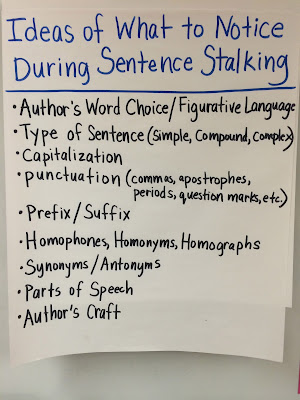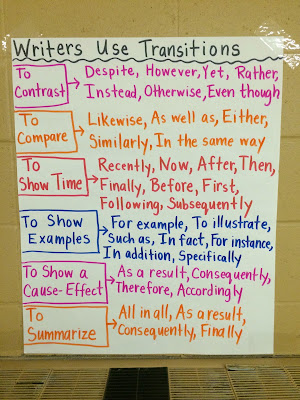Each school year a unique mix of middle school students enter the doors of my classroom. Each with a story, each with different strengths, each with different weaknesses. I never take this responsibility lightly because what this means for me, as their teacher, is that I don’t get to take the already published book off the shelf and write the same story as I did last year. Instead, we create and co-author a new story together. A story that I could never dream up or predict until it happens the way that it needs to happen. After all, doesn’t every new class that enters your classroom door deserve a story of their very own?
Because of this, the walls of my classroom to begin the year aside from staples I keep up each year, begin as a blank canvas. The anchor charts that fill my room happen naturally, as our story is being created, new anchor charts are being created to match the learning that is happening in the classroom. When students need to be reminded of a concept we have covered or an expectation that is expected of them, they can refer to the anchor charts on our walls and be brought back to that moment in our journey. Anchor charts help with retention of material, they help with developing student independence, and they also help to anchor routines and expectations. Below is the story of our learning so far this school year.
“Before you turn in any piece of writing, ask yourself…” This anchor chart is designed to help students self-assess their writing and be that self-talk that many of them need. Teaching students to be reflective is one of the hardest yet most beneficial skills we can teach as teachers. This anchor chart is a great reminder for my students and for myself. The best thing about it? My co-teacher who teaches the same group of our students math and science is on board with holding students to these same writing expectations with this same language.
During our weekly sentence stalking, students can use this anchor chart to gather ideas of different items to notice so that they’re not always noticing the same types of things.
These are the symbols I use when editing student writing and also the symbols I want them to use when they self-edit and edit their peers’ writing. This anchor chart is a helpful, quick reminder of the editing symbols.
I LOVE this anchor chart for middle school students. During the first few weeks of school, we referred to it often to self-assess how we did as a class and as an individual with following the expectations in order to make independent reading and writing time productive. If we have a rough day with following expectations, I come right back to this anchor chart and reinforce the positive behaviors students ARE exhibiting.
Our current interactive read aloud is Killing Mr. Griffin, and it’s written in 3rd person omniscient. Students are loving the almost spooky way the narrator of the story seems to know EVERYTHING. We had an awesome discussion about point of view through that and now students are actively identifying the point of view in their independent reading books.
Reading is thinking, and one of the strategic reading actions to show that thinking is by summarizing. I like to start the year with a few minilessons on summarizing because it seems to be a building block for the other reading minilessons. These are some of the criteria we set for what summaries should include and not include.
Writers use transitions for a variety of purposes. Crafting transitions smoothly into writing improves sentence fluency and help make ideas clear. This anchor chart will be a great reminder to aid students in doing this in their writing all school year.












